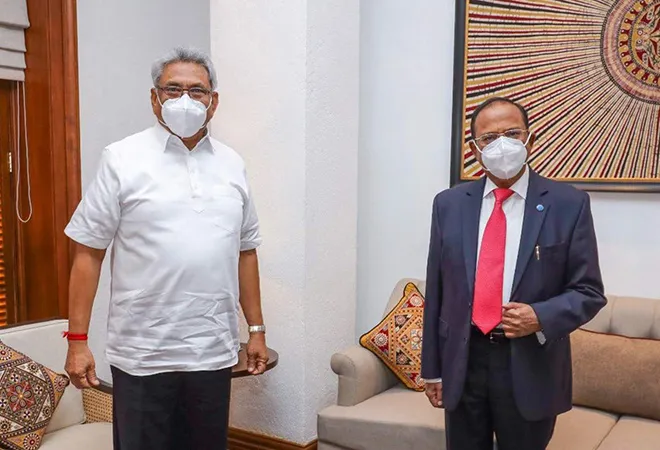
After their partition in August 1947, India and Pakistan have followed different foreign policy paths. India has pursued an ‘independent’ or a ‘non-aligned’ foreign policy choosing not to side with either the western (US) or eastern (USSR) bloc, focusing instead on preserving its own strategic autonomy. Pakistan on the other hand, insecure of its standing next to a larger, stronger India chose to make alliances that it hoped would protect it against possible Indian ‘aggression’, joining military alliances such as South East Asia Treaty Organisation and Central Treaty Organisation. Over the years, it continued to expand its military relationship with the United States, acting as Washington’s conduit for weapons fighting communism in Afghanistan. It also inched increasingly closer to China; the two countries united not by political or economic ideology, but a common ‘enemy’ India. Such was the state of affairs for more than five decades in the subcontinent.
Over the years, certain geopolitical developments molded the South Asian landscape, forcing both India and Pakistan to adapt and change their foreign policy priorities.
The collapse of the Soviet Union and the end of the Cold War, along with an opening up of its economy ended New Delhi’s rationale of non-alignment. No longer faced with the same challenges of a bipolar world order, India expanded its relationship with the United States. Without being a signatory of Non-Proliferation Treaty, India and the US signed a historic agreement in 2005 that allowed India to continue developing its civilian nuclear program. This unique arrangement represented a shift in New Delhi’s strategic engagement with the rest of the world. With Russia, India has continued to maintain its close relationship with military and defence cooperation being the most important aspect of its bilateral relationship.
Nothing has had a more profound impact on South Asia than the rise of an increasingly aggressive China. While China has continued to portray its political, economic and military rise as ‘peaceful’ its relationship with Pakistan and actions in the South China Sea and Indian Ocean have demonstrated otherwise.
By using its economic strength to expand its relations with India’s neighbours such as Sri Lanka, Bangladesh, Nepal and Myanmar it has attempted to control India’s rise, while simultaneously supporting Pakistan’s development. A significant driver of change in South Asia’s political geography has been the string of infrastructure projects in the subcontinent. The largest and most discussed has been China’s Belt and Road Initiative (BRI) which envisages a large road and railway network. The China-Pakistan-Economic Corridor or CPEC, a vital part of BRI, which connects the western part of China to the Gwadar Port in Balochistan, gives China easy access to the Arabian Sea. In Sri Lanka, China’s development aid has grown at a rapid pace with Beijing acquiring the strategically located Hambantota port in the country. These projects in Pakistan and Sri Lanka have given China, strategic access points in the oceans surrounding India, a key area of Indian influence. Beijing has realized that maritime strength in the Indo-Pacific will provide it the strategic leverage necessary to become a regional hegemon.
Faced with these new foreign policy challenges, India has sought to reorient its priorities and relationships. Acting on its perceptions of China’s increasing footprint in South Asia, India has awakened, to the realization of the importance of establishing its own footprint in the larger subcontinent. New Delhi has gone from championing decolonization and non-alignment to a new found interest in ASEAN countries, Central Asia and its neighbours in the Bay of Bengal region. Today, ASEAN is India’s fourth largest trade partner with a free trade agreement that has helped facilitate trade and the movement of manpower and investments. It has also taken steps to increase its diplomatic engagement with Central Asia, as a part of it “extended neighborhood”, expanding relations in areas of economic, political and security cooperation as well as assisting Central Asian countries in areas of information technological, mining, construction and industrial production. The International North South Transport Corridor, which envisions a ship, road, and railway route connecting India, Iran and Russia, along with the Chabahar port in Iran, have been two of India’s large scale projects in the region. The Bay of Bengal Initiative for Multisectoral Technical and Economic Cooperation, which had been previously ignored, has received a push for revival from India, seeking to promote economic and other forms of connectivity in the bay area. India has used different bilateral and multilateral strategies to pursue a regional leadership role in South Asia, and China has concentrated on bilateral relations rather than on multilateral structures. Both countries have, however, expanded their traditional regional focus. As China looks towards building on its relationships in South Asia, India has also begun to look beyond its traditional neighborhood. Its outreach towards Southeast Asia, Central Asia, as well as the wider Indo-Pacific underscores the renewed importance that New Delhi is giving to Asia and its own footprint in the region. These factors are all set to fundamentally reconfigure the geopolitics of South Asia.
The views expressed above belong to the author(s). ORF research and analyses now available on Telegram! Click here to access our curated content — blogs, longforms and interviews.




 PREV
PREV



